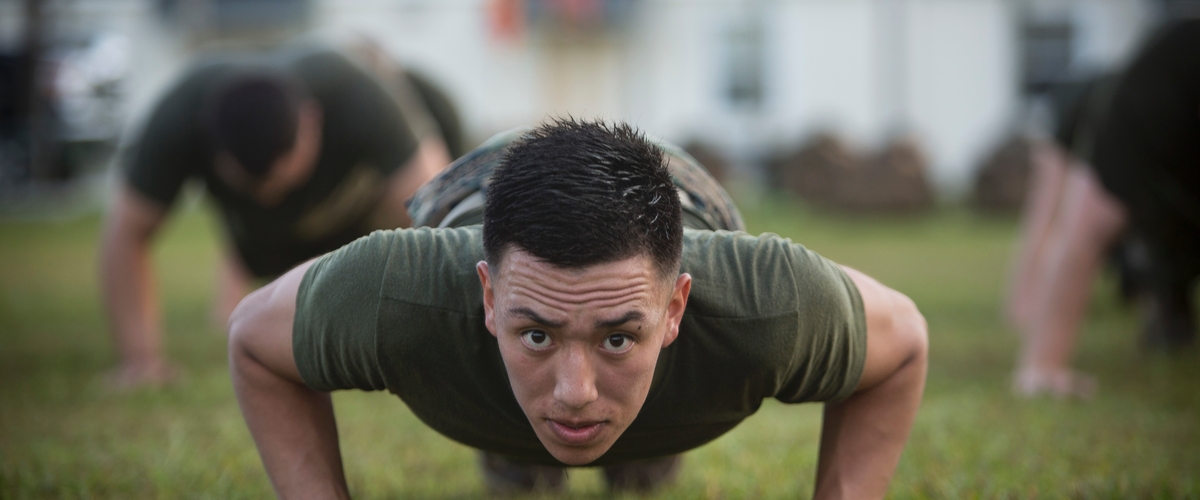Foundational Movements for the HITT Athlete

The goal of incorporating foundational movements into a tactical fitness program is to emphasize functional movements that will transfer the fitness gained from exercise into improved durability and performance. Foundational movement techniques engage the body as a single coordinated system, complement the movements the body performs on the job and in life, and help to build optimal and usable strength, power, mobility and durability. Movement patterns fundamental to most activities can be re-created, loaded, unloaded and trained through repetition on the multiple modalities to enhance execution in daily routines.
Check out the following seven Foundational Movements each Marine should focus on:
- Push: A strong, active plank is the foundation for pushing and pressing movements. Traditional pushing and pressing exercises are used to focus on chest, shoulder and arm strength. These muscles work together as a group to "push." The push requires you to stabilize your shoulder girdle to reduce the risk of injury and improve control, strength and power. Pushing exercises integrate core and lower body for improved functional fitness.
- Plank: A strong core is the centerpiece of efficient and powerful movements. Core strength developed with traditional crunches, sit-ups and rotational exercises is different than the focus of the plank, which is bracing the core for stability, keeping the spine stable and resisting motion.
- Pull: Pulling movements integrate the entire posterior chain: Shoulders, back, hips and legs. These movements help to develop strength for lifting, pushing, climbing, posture and pulling.
- Rotation: Practicing and becoming skilled at rotation will improve performance and durability in movements such as chopping, striking and swinging. Efficient rotation requires a balance of stability in the hips and pelvis (plank) and mobility in the hips and thoracic spine. The ability to differentiate stability from mobility is critical to rotation. Advanced rotational movements often involve pivoting on one or both feet to help maintain joint alignment, improve balance and enhance power. Pivoting is the act of unloading the heels on either one or both feet and allowing them to rotate toward the direction of force during a rotational movement pattern.
- Hinge: Practicing and becoming skilled at the hip hinge will improve performance and durability in lower-body exercises such as the squat, lunge, stepping and climbing variations. A good hinge incorporates an active plank with depression and retraction of the shoulder girdle, generating movement from the hips. The hinge is the combination of a stable, supported spine, controlled flexion and extension of the hips. Examples of a hip hinge include a deadlift, squat, kettlebell swing and pike.
- Squat: The squat has been called the king of all lower-body strength exercises because of its ability to develop quads, glutes, hamstrings and the core. Strength should be built upon a foundation of mobility.
- Lunge: The lunge is a functional, lower body strength exercise ideally tasked for running, rucking, climbing and other daily activities. The movement works the legs, hips and core musculature, developing single-leg strength, mobility, balance and coordination. Focusing on the lunge as a foundational movement will carry over to gait, stepping, climbing and carrying loads. Focus should be on activating the posterior chain (hamstrings, glutes) during the lunge rather than the anterior chain (quads). Focus should also be on extension of the hip while keeping the foot firmly grounded, taking stress off of the knee.
For more information, contact your local Fitness Center.